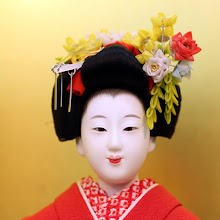Kanji refers to the symbols and characters that are currently used in modern Japanese writing. The characters were first introduced to Japan on articles that were brought to Japan from China. One of the first instances of these imports from China was a gold given by the emperor of the Han dynasty in 57 AD. In fact the term kanji is literally translated to “Han characters.”
There is no way of knowing when the Japanese began learning and using classical Chinese on their own. The first Japanese documents were probably written by Chinese immigrants because at the time the characters were introduced to Japan, the Japanese had no written language of their own. Eventually the emperor formed groups of people called fuhito whose task it was to read and write Classical Chinese.
Over time a form of writing known as kanbun developed in which Chinese characters were accented with diacritical marks in order to allow Japanese speakers to rewrite the Chinese characters in a way that was in accordance with Japanese grammar. Today kanji is used in modern Japanese to write parts of speech such as nouns, adjective stems and verb stems.
Another form of writing known as hiragana is used for inflected verb and adjective endings, particles, native Japanese words, words where the kanji is considered too difficult to read or remember, and words in which the kanji is not on the government-sanctioned list of characters. A third form of writing, katakana is used for onomatopoeia, non-Japanese loanwords, the names of plants and animals (with exceptions), and for emphasis on certain words.
Today in Japan there are about 2,000 and 3,000 characters are in use, though in China there are as many as 100,000 characters in use. There are four types of kanji that are taught and used in Japan. Kyōiku kanji are the 1006 characters that Japanese children are taught in elementary school. The Jōyō kanji consists of the 1006 elementary words and the 939 kanji that students are taught in junior high and high school. Jinmeiyō kanji can either refer to the 983 kanji that are used in names or all of the 2,928 characters of the Jōyō kanji and the kanji used for names. A fourth type, Hyōgaiji, is used for any kanji that does not fit any of these categories.
Wednesday, January 13, 2010
Subscribe to:
Post Comments (Atom)

No comments:
Post a Comment